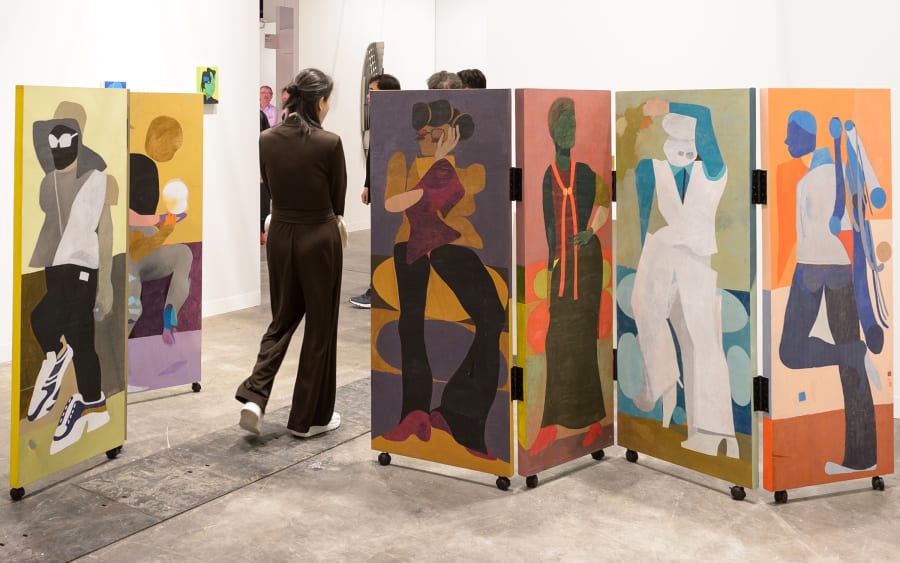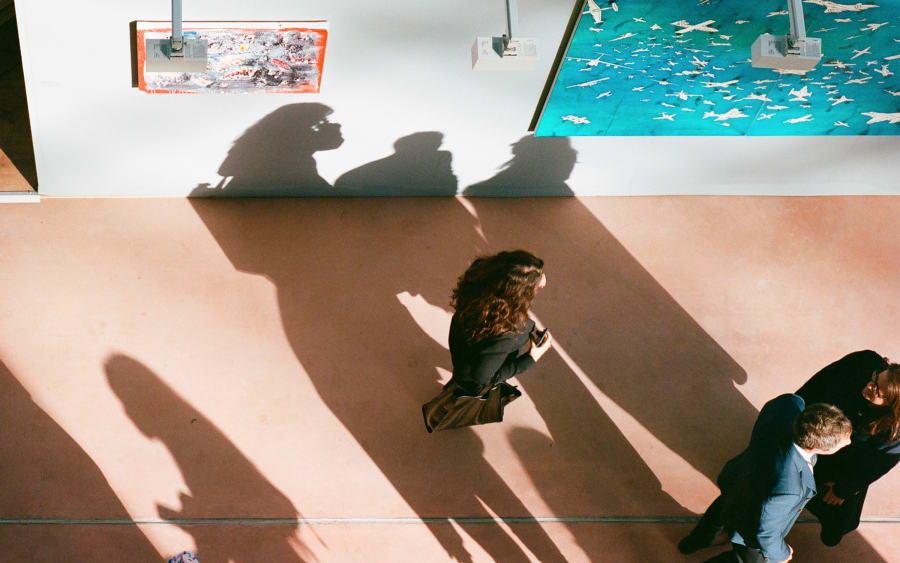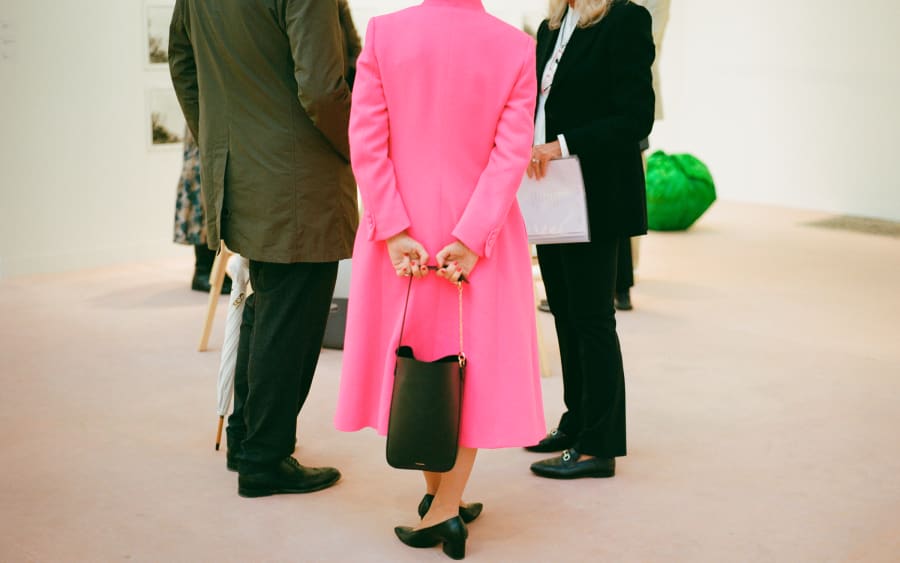The art market has gone through great changes in the last decade when it comes to digital capabilities. These, in turn, are affecting the channels through which art is purchased. The Art Basel and UBS Survey of Global Collecting 2024 reports that buying in person from a dealer’s premises or gallery remains the most common way for high-net-worth (HNW) collectors to access dealer sales, with 74% doing so.
But, in the first half of 2024, of those respondents who had purchased from a dealer, 72% had purchased directly through their website or online viewing rooms (OVRs) without viewing the work in person first (compared with 74% in 2023 and 69% in 2022); 61% had made a purchase using either an email or phone call to the dealer without a viewing (roughly on a par with both 2022 and 2023); and 43% bought on Instagram without viewing the work in person (up from 41% in 2023). Moreover, 28% of those buying from a dealer in the first half of 2024 shared that they had used all four sales channels when purchasing works. Only 11% bought exclusively from dealers through their gallery premises in both 2024 and 2023 (down from 25% in 2022). The results show ‘the importance of the new multichannel approach many dealers have taken in making sales,’ the report concludes.
‘It’s hard to put a finger on the percentage of sales that comes from each of the various channels because today, people consume news and information from all of these access points,’ says Sundaram Tagore, the director of the eponymous gallery located in New York, Singapore, and London. ‘It’s not a linear process anymore. We live in an entangled world and that is reflected in how sales are made these days. More often than not, it’s a combination of an in-person experience and some kind of digital interaction.’
Sisters HeeJin Park and Jessica Park, cofounders of the Korea-based cultural consulting company TCC Ltd say that ‘different sales channels serve distinct roles in the collecting ecosystem, each offering unique advantages that cater to different needs and levels of engagement.’ So, when looking at each channel individually, what are the patterns around buyer preferences?
According to The Art Basel and UBS Art Market Report 2024, online sales made up 23% of dealers’ total sales in 2023, up 7% from 2022, but are not as high as during the pandemic. ‘Pure online sales have decreased, which is no surprise as not everyone is stuck inside anymore fidgeting with their thumbs for something to do,’ says Amanda Hon, the managing director of Ben Brown Fine Arts in Hong Kong.
While some of the galleries interviewed for this article report no distinction between the ages and nationalities of those making art purchases online, most agree that younger audiences were the most likely to do so. ‘Younger collectors (millennials and Gen Z) are far more comfortable with online purchases and digital discovery,’ the Parks say. Georgia Powell, the cofounder and director of CURA Art advisory, adds that ‘better images, videos, and different technologies are allowing for this, and OVRs are helping people to imagine the work within their own space.’ Tagore also notes that younger collectors ‘like to do things differently than their parents’ generation.’
The Survey of Global Collecting makes more of a distinction between the younger generations, pointing to research that argues that while Gen Z – as the first true ‘digital natives’ – are more likely to research online, purchase on devices, and value an easy and positive online experience, they have ‘also been shown to have much stronger preferences for physical, brick-and-mortar stores and to spend significantly more time in them than millennials.’
The Parks also observe different tendencies in different regions. ‘In Asia, where discretion and trust are central to collecting habits, in-person transactions and advisor-mediated sales remain dominant for veteran collectors,’ the sisters say. ‘However, younger collectors in Asia, who may not always have access to works concentrated in Western markets, actively utilize online resources and often acquire pieces through direct Instagram messages and email correspondence with artists.’ The Parks believe that Western collectors, particularly in the US and Europe, tend to integrate digital tools more seamlessly into their collecting.
Pearl Lam, the founder of Hong Kong- and Shanghai-based Pearl Lam Galleries, says they often receive inquiries through direct messages on Instagram but that ‘in reality, most of these turn into longer conversations via email, WeChat, or WhatsApp – this conversation and engagement is everything for us and is one of our most common ways of finalizing sales.’
It is also worth noting that the kind of work a collector is buying can also help determine the channel through which they will buy. ‘If it’s contemporary and the collector knows the artist’s works and has seen examples of it, then they’re usually more inclined to purchase the work without needing to see it in person. However, if it is a Modern work, where condition is most important, then of course, they’d rather see it in person themselves,’ Hon says.
The latest collecting survey reports that almost a third of respondents had made a purchase directly from an artist in the first half of 2024 (up from 27% in 2023, but down from 43% in 2022). ‘We’ve certainly witnessed an increased desire to connect directly with artists and nurture those relationships,’ Powell says. ‘We think Instagram is not only increasingly a tool for discovery, but [it enables those] very direct relationships with artists that people seem to want these days.’ The survey findings reflect the same, with 60% of those having purchased directly from an artist doing so through Instagram in 2024 (that is, having found an artwork on the platform and purchased it directly from or through a link to an artist), whereas 57% had purchased from artists’ studios and 39% had commissioned work. The Parks also note that works by emerging artists, in particular, are often bought through these channels.
All experts interviewed for this article unequivocally agree that the in-person experience of art, both in general and as part of the purchasing process, remains a central part of the art world. ‘I will always have physical locations because I believe service is an integral part of this business. We don’t just sell art, we create context for art and that means building community,’ Tagore says. As well as its three physical spaces, the gallery has ‘an aggressive art fair strategy that brings us to collectors. Over the past several years we’ve attended at least 12 fairs a year around the world,’ he adds.
For Galería Cayón, exhibitions in its spaces in Madrid, Menorca, and Manila operate in tandem with its fair presentations, using fairs to ‘announce upcoming or current exhibitions and provide a first meeting point for collectors,’ says Adolfo Cayón, the gallery’s director. ‘This year we are presenting works by the artist Jesús Rafael Soto in Art Basel Hong Kong, derived from our summer exhibition that took place in Menorca.’
The slow shift in focus away from in-person, gallery-direct sales is not necessarily about one method replacing another but rather an expansion of options, the Parks say. ‘A multichannel approach is no longer optional – it’s essential. Collectors today expect versatility and accessibility in how they engage with art,’ the Parks add. However, Lam expects to see remote and online purchases grow as the younger generations of collectors come through. ‘The key is to meet them where they are,’ she says, ‘whether that’s at a fair, in the gallery, over email, or on WhatsApp.’
Download the Art Basel and UBS Survey of Global Collecting in 2024 here
Aimee Dawson is a British writer, editor, and speaker on the art world. Her areas of specialty include art in the digital sphere; art and social media; and Modern and contemporary art in the Middle East.
Caption for header image: Kim Bohie’s work, presented by The Modern Institute at Art Basel Miami Beach 2024.
Published on February 17, 2025.


